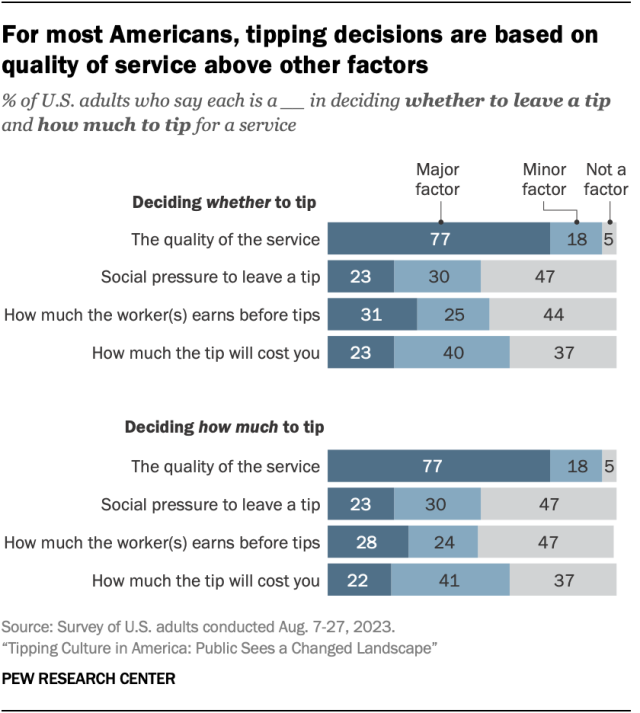Above all, tipping is a question of service for most Americans. Around three-quarters of adults (77%) say the quality of the service is a major factor when deciding whether and how much to tip, while 18% say it is a minor factor. Only 5% don’t consider it a factor at all.

Far smaller shares point to other potential factors. For example, only about three-in-ten adults say a service worker’s pre-tip wages are a major factor when deciding whether and how much to tip.
About a quarter of Americans say social pressure to leave a tip is a major factor in deciding whether and how much to tip. And similar shares say a major factor in these decisions is how much the tip will cost them as the customer.
Related: Do You Tip More or Less Than the Average American?
In every demographic and partisan group examined, Americans are more likely to point to the quality of the service than to any other factor when deciding whether to leave a tip or not. But there are still some demographic and partisan differences over this and other factors:
- Service quality is by far the most cited factor across all age groups, but younger Americans are more likely than older people to consider certain other factors. For example, adults under 30 are more likely than those 65 and older to point to workers’ pre-tip wages, social pressure and cost as major factors when deciding whether to leave a tip.
- Upper-income Americans are more likely than those with middle and lower incomes to say social pressure is a major factor in deciding whether to tip. Conversely, the cost of the tip is more likely to be a major factor in this decision for middle- and lower-income Americans than for upper-income adults.
- Republicans and Republican-leaning independents are more likely than Democrats and Democratic leaners to see quality of service as a major factor. Democrats, in turn, are more likely than Republicans to cite some other factors. For example, 35% of Democrats – compared with 27% of Republicans – say a worker’s pre-tip wages are a major factor when deciding whether to leave a tip or not. Liberal Democrats are especially likely to see this as a major factor (41% do so).
These demographic patterns are broadly similar when Americans are asked about the factors they take into account when deciding how much to tip.




